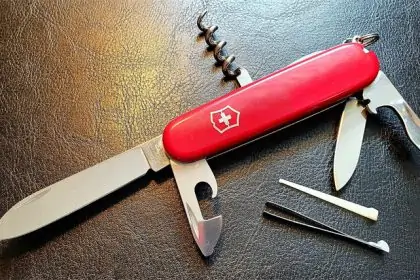The latest EU Customs report on the enforcement of intellectual property rights in Europe shows a sharp increase in seizures of counterfeit goods for 2018, with 15% fewer counterfeit goods seized than in the previous year.
 In 2018, the European customs authorities seized more than 69,000 articles, out of a total of 26.7 million. This is a decrease of 15% compared to the previous year. However, the total number of cases (each case represents customs supervision) increased by 21% in 2018. Compared to the previous year, the domestic retail value affected by counterfeits rose by 27 % to 738 125 867 euros.
In 2018, the European customs authorities seized more than 69,000 articles, out of a total of 26.7 million. This is a decrease of 15% compared to the previous year. However, the total number of cases (each case represents customs supervision) increased by 21% in 2018. Compared to the previous year, the domestic retail value affected by counterfeits rose by 27 % to 738 125 867 euros.
Germany is top target country for counterfeit products
Germany is by far the top target country for counterfeit products, with Belgium occupying second place in the EU. China, on the other hand, is the main source country for as much as 50% of the counterfeit products recorded. This matches the product groups that were mainly counterfeited: in addition to the top product group “cigarettes”, toys, clothing, labels, sports shoes and packaging materials were also counterfeited, according to the European study.
Many counterfeit products from Asia
As in previous years, Hong Kong, China, Turkey and Vietnam remain among the top seven source countries. But there are also many counterfeit products due to large imports of packaging materials (with copyrighted images or names) from Bosnia and Herzegovina and from Cambodia and Georgia for cigarettes. Specialists for counterfeiting of clothing are Vietnam and Bangladesh.
Interesting is also the division of the counterfeit articles with regard to the property right they violate. 64% of all counterfeiting infringes trademark articles, another 9.7% infringes design rights. Significantly fewer patents were infringed (0.5%), mainly audio and video equipment. Despite minor cases in the amount of 0.1 %, infringements of geographical indications are also affected, as champagne and alcohol were particularly affected.
A large proportion of the counterfeit goods – together with the destruction of small consignments, which accounts for 83% of the total – are destroyed. Only 3.8 % go to court at all. We would like to take this opportunity to point out once again that so-called customs border seizure is an effective means of combating counterfeiting and piracy.
Customs border seizure
The term “Customs border seizure” is standing for the following prozedure:
European or German customs authorities intercept suspicious products at the border, detain them for a certain period and inform the holder of the property right concerned of the discovery of the suspicious goods. The latter is then in a position to take action against potential product or brand pirates.
Border seizure can also be applied to products intended for export or reimport into the EU or Germany.
We will be happy to advise you on these questions and will be happy to get in touch with you.








Leave a Reply